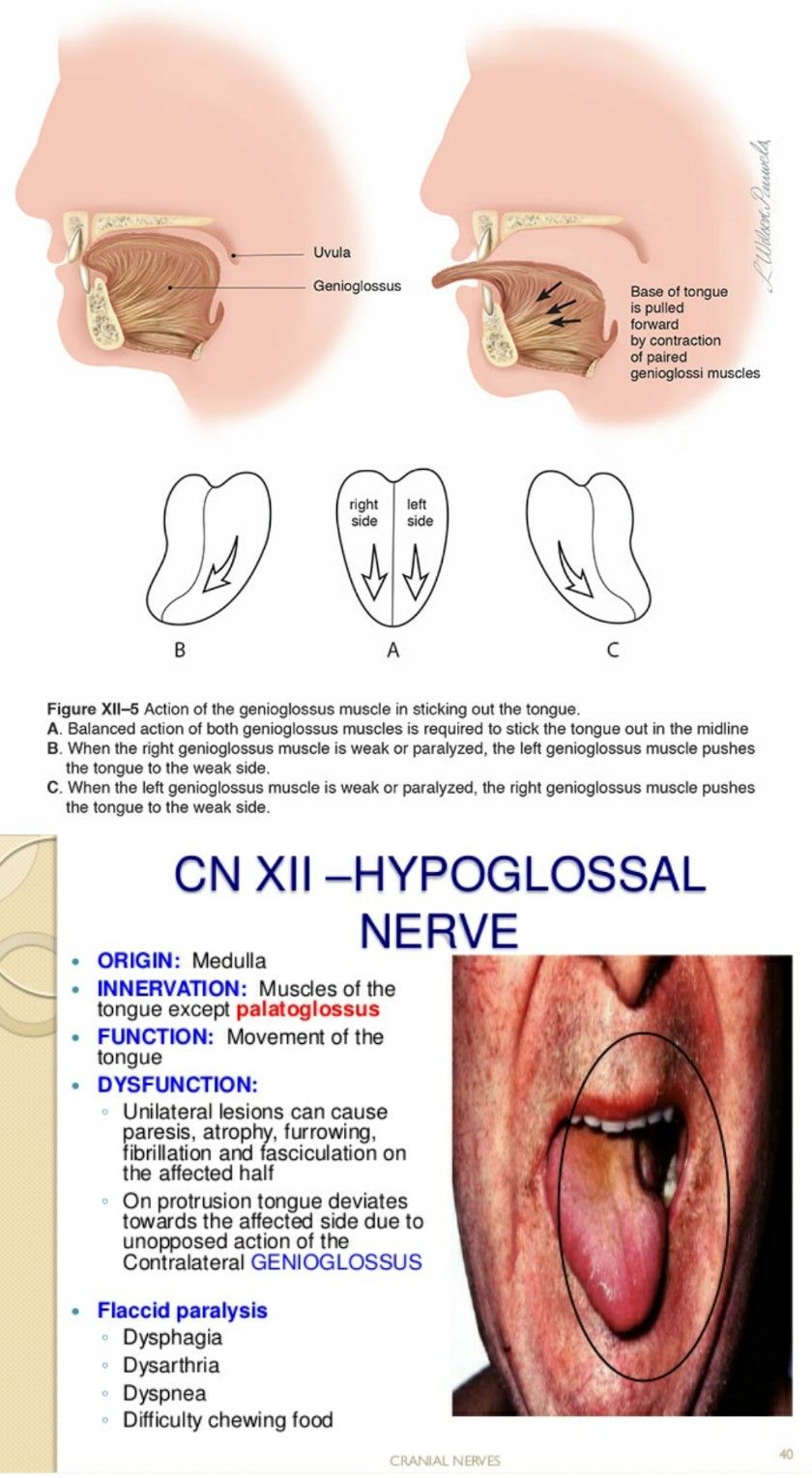The tongue deviation in hypoglossal weakness
The tongue deviation associated with hypoglossal nerve weakness is a clinical sign indicative of damage to the hypoglossal nerve, also known as cranial nerve XII. When there is unilateral weakness in the hypoglossal nerve, the tongue will deviate towards the side affected due to the imbalance in muscle strength. Specifically, the genioglossus muscle, which is responsible for tongue protrusion, acts stronger on the unaffected side, causing the tongue to point towards the weaker, injured side upon protrusion.
Here are some essential points regarding this condition:
-
Mechanism of Deviation: When the hypoglossal nerve is damaged on one side, the muscles that the nerve controls (both intrinsic and extrinsic muscles of the tongue) weaken on that side. When a person attempts to stick out their tongue, the stronger muscles on the opposite side will dominate, pulling the tongue toward the side of weakness (the damaged side).
-
Associated Symptoms: In addition to tongue deviation, individuals might experience weakness of the tongue, atrophy (wasting away) of the tongue muscles on the affected side, dysarthria (difficulty speaking), and dysphagia (difficulty swallowing), as noted in various medical resources.
-
Clinical Relevance: Conditions causing hypoglossal nerve damage can stem from a variety of causes including trauma, tumors, or surgery complications affecting the nerve's pathway.
-
References: For more in-depth coverage of hypoglossal nerve functions, the outcomes of its palsy, and related clinical signs, you might refer to the following resources:
In conclusion, the evaluation of tongue deviation in the context of hypoglossal nerve weakness provides important insight into the underlying neurological pathology and can guide further diagnostic and therapeutic approaches.
Sources


Related Questions
Work fast from anywhere
Stay up to date and move work forward with BrutusAI on macOS/iOS/web & android. Download the app today.
